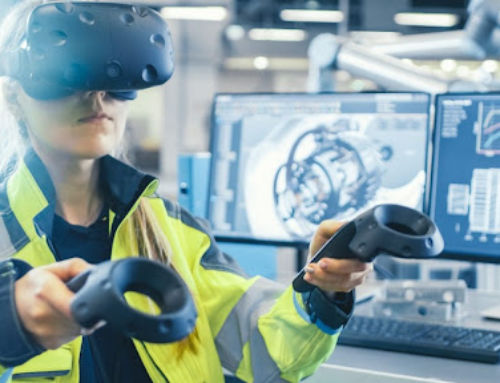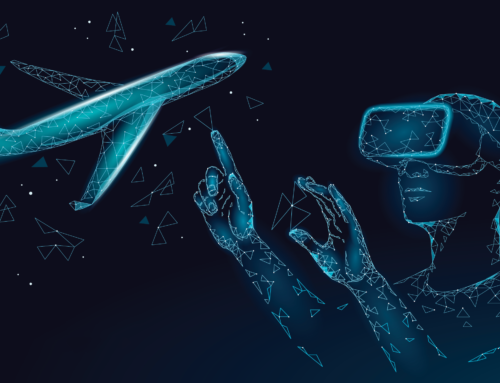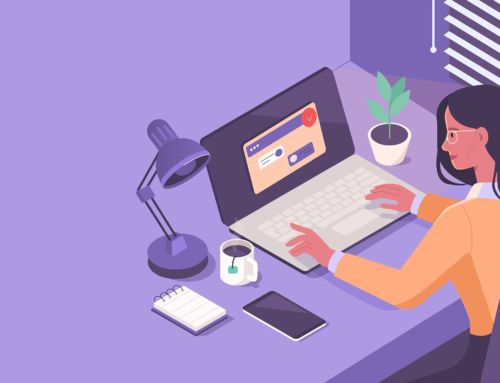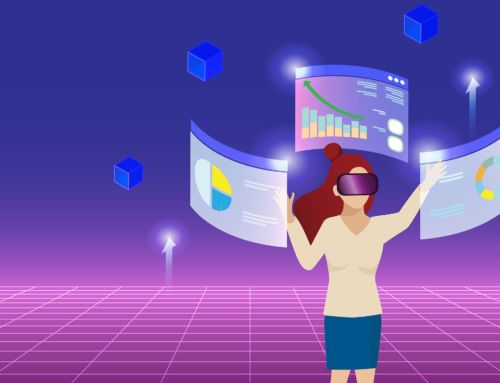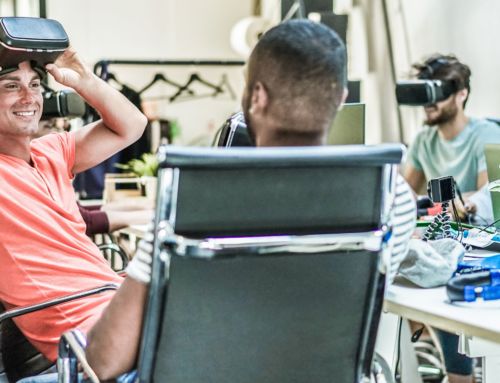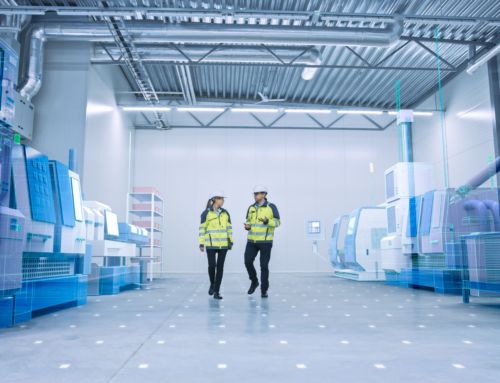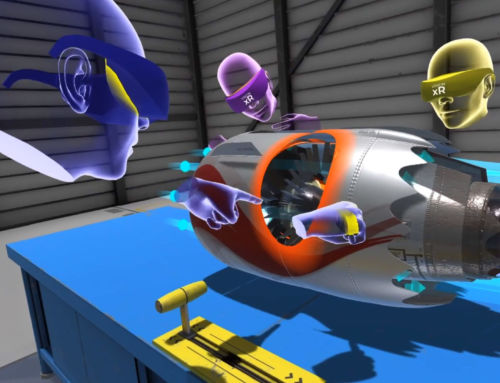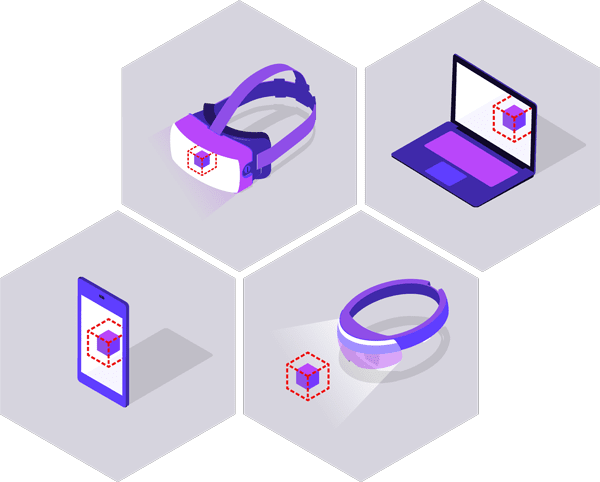
The Advantages of On the Job Training for Businesses:
Looking to train your employees in a way that is tailored to their specific needs whilst addressing real life issues in the workplace? From introducing new employees to corporate policies and procedures, to supporting an employee’s professional development, on the job training may be the answer.
On the job training (often referred to as OJT) is a well-established and effective method of ensuring that employees have the skills and knowledge needed to perform their job. It takes place in the workplace; either at an employee’s actual workspace or in spaces that can be dedicated to learning such as onsite training or meeting rooms. On the job training includes a range of resources, such as handbooks, manuals, videos, and online and immersive training modules, as well as using the equipment and tools. What’s more, it can also draw on the expertise and knowledge of other members of staff through job shadowing and coaching.
There are tangible advantages of on the job training for both employees and employers alike. It benefits companies by ensuring employees have the right skills and understanding to carry out their roles safely and competently, as well as being a time and cost-effective way of undertaking training. It can also be tailored to address the individual needs of each employee, as well as helping them to feel motivated and valued.
How to Deliver On the Job Training in the Workplace
On the job training can take many forms – from structured, formal learning programmes through to unstructured and ad hoc bursts of training activity. Finding the right training mix is crucial to help individual employees perform at their best, whilst also helping to boost your company’s productivity levels.
Structured on the job training methods are more formal than simply expecting employees to get on with their job, make mistakes and learn from them. There are a range of key techniques and resources to support employees learning journeys, including:
Training Manuals
Training manuals are a great and simple resource that can help to teach new recruits about a company, its processes and procedures. Manuals are also useful for existing employees, to ensure they have the most up-to-date skills for working with tools, machinery, software and new technologies – and beyond. Easily accessible step-by-step and visual guides are particularly useful in helping employees to address specific gaps in knowledge and act as a reference guide when working on real life tasks.
Videos
Compared with written materials, training videos can significantly improve engagement and the effectiveness of on the job learning experiences by combining visual steps with audio instructions. Training videos are often short, focusing on a specific task so can be viewed at leisure by employees to fit around work commitments.
Online learning programmes
Like video training, online learning programmes can offer bite sized training sessions that can be accessed by the employee at a time that’s convenient for them. Employees can also take a mix and match approach, tailoring a training programme to their individual needs by selecting relevant modules.
One of the key benefits of online training platforms is that they can be interactive and measurable. Quizzes can be undertaken to test retention of knowledge. As well as increasing engagement in training, this can also be integrated with HR systems, automatically feeding into the individual’s performance records.
Job Shadowing
Job shadowing is a tried and tested way of giving an employee a better understanding of a task or job role by observing a fellow employee at work. It gives the trainee an insight, rather than a practical hands-on experience.
Coaching
Coaching takes structured on the job training to the next level. A coach can help an individual (or coachee) by helping them to learn, rather than directly trying to teach them new skills. In practical terms, this means a shift in emphasis from imparting knowledge to helping the coachee to explore ways to improve their own performance. Coaching isn’t simply about learning how to carry out tasks, it can also make employees more aware of the impact of their decisions, take responsibility for their actions and understand their personal impact on their team and the business they work for.

Immersive experiences
Immersive technologies such as virtual reality (VR) give us a glance into the potential future of on the job training. Virtual training platforms such as Future Visual’s VISIONxR™ highlight how immersive technologies can offer employees new and exciting ways to learn, without leaving their workplace. What’s more, it has significant advantages over other work based training and can be address a broad range of skills issues from technical to soft skills and beyond.
Employees have the chance to experience hands-on, practical and measurable training in a safe, risk-free virtual environment, where skills are learned faster and the retention of learning is improved by the ability to repeat and perfect tasks.
VR also offers a collaborative learning environment that accurately replicates a real-world workspace. This means that teams can train together to improve workflows and interdependent tasks. It also can bring together teams in a shared workspace without having to be in the same physical space – great for businesses based over multiple sites or those with significant numbers of remote workers.
Who knows a job better than someone highly experienced in doing it?
On the job training doesn’t just give employees the chance to experience a hands-on approach to learning new skills and company procedures – it also crucially gives them the opportunity to benefit from the expertise of their fellow employees. This isn’t just beneficial to the trainee; it can also be hugely rewarding to the person who is passing on their knowledge. But putting in the right structures and procedures is crucial to support both the learner and the member of staff who is delivering training.
Top tips for on the job training using existing staff expertise:
Embed it in your company culture
It may be a more time and cost-effective way to inject a comprehensive skills development programme into businesses than traditional classroom training, but structured on the job training isn’t a quick and easy fix. Whether it’s producing a user-friendly manual or introducing a company-wide online training programme; it requires the commitment of time, energy and budget to develop the right skills solutions to help your employees and ultimately your business to grow.
Additionally, fostering an environment where development of employees is at the heart of the business is crucial. It’s important to get buy-in at all levels and dispelling any potential negative responses or suspicion of ulterior motives. On the job training programmes will only ever be as strong as the employees who are learning, teaching or coaching, so ensuring they are 100% on board with your employee development strategies is a must.
Guidelines and support for the trainer
Passing on knowledge and skills through techniques can be satisfying, but taking on the additional responsibility can also add additional time and stress to an employee’s workload. As such, employers need to ensure that it’s not just the learner who is left feeling supported.
If an existing employee is going to be shadowed by an intern, become a coach to support a colleague, or even run training sessions on a specific task, there needs to be clarity on what the training is addressing, how it is being delivered and what their role in the whole process is. They also need to be reassured that this will not impact negatively on their own work performance, rather it will expand their skillset as a valued employee.
Employees delivering on the job training need to be confident in delivering training and support in whatever form it takes; and don’t assume that this will come naturally because they are great at their job. Offering potential training to employees who will be sharing their expertise may prove to be invaluable, as it gives them the chance to learn new skills, such as how to ask the right questions of the learner, how to deal with difficult situations and give positive feedback.
Set clear parameters
For on the job training to work, everyone needs to be on the same page. This starts by aligning training with HR procedures, from defining competencies for the role, to identifying training needs, introducing effective interventions and agreeing what success will look like. Personal development plans are useful to map this out and can be shared with each employee, their line manager and, where appropriate, any colleagues that are supporting their learning journey, to ensure aims and objectives are clearly defined.
Evaluate and review performance
Having established clear objectives and desired learning outcomes, measuring success is crucial. Keeping a regular eye on progress will help to identify if learning objectives are on track, or highlight the need for additional training interventions.
Ensuring Employee Training Sticks
Ultimately, if on the job training is being adopted across your business, you need to see tangible results. You want to see that employees are better equipped to carry out their jobs, as well as being more motivated and contributing positively to the company’s overall objectives. But how can you ensure that on the job training works?
Training experiences such as coaching on the job training ensure that skills can be passed on between employees with long lasting effects. The key to its success is building and retaining long term relationship between coach and coachee by:
Building trust and respect from the start
Let’s face it, we can all feel a little bit vulnerable when we don’t know the answer to something or when we’re faced with change. A coach needs to be fully trusted, as asking an employee to reveal their training needs to a colleague takes a real leap of faith. A coach needs to help to create a confidential and engaging environment where the coachee feels respected and trusts them to take an active part in their professional development.
Developing a series of small, achievable goals
On a practical level, setting objectives and measuring success it integral to all on the job training. For long term coaching experiences, these objectives may feel overwhelming, so working together to break these down into achievable goals will help to build confidence and move the coachee towards their ultimate skills destination.
Becoming an active listeners
On the job training is a two-way relationship. Coaching isn’t just about being taught, it’s about learning. A great coach will help their coachee to work through issues by actively listening and resisting the temptation to jump in with all the right answers. By doing this the coachee’s learning experience will be enriched and their retention of knowledge will be significantly improved through deeper understanding.
Giving positive feedback and help build confidence
We all like being praised when we’ve done a good job, and being coached is no different. Positive feedback can help boost a coachee’s confidence, reinforce best practice and ultimately help to improve performance.

The Future of On The Job Training
Ultimately, if training is being adopted across your business, you need to see tangible results. You want to see that employees are better equipped to carry out their jobs, as well as being more motivated and contributing positively to the company’s overall objectives. On the job training can help employees to learn and practice new skills, give them support by having learning resources to refer to when undertaking tasks and help to build effective working relationships with colleagues.
The growth of immersive technologies is a potential game changer in the on the job training environment. Virtual reality platforms such as VISONxR™ can take collaborative learning in a distraction-free environment to a new level of engagement and interaction. With immersive experiences becoming more realistic and responsive, coupled with hardware becoming more affordable and widely available, the reality is, the future of on the job training is virtually here.
To get in touch to discuss your next project contact us here: https://www.futurevisual.com/contact/

The Advantages of On the Job Training for Businesses:
Looking to train your employees in a way that is tailored to their specific needs whilst addressing real life issues in the workplace? From introducing new employees to corporate policies and procedures, to supporting an employee’s professional development, on the job training may be the answer.
On the job training (often referred to as OJT) is a well-established and effective method of ensuring that employees have the skills and knowledge needed to perform their job. It takes place in the workplace; either at an employee’s actual workspace or in spaces that can be dedicated to learning such as onsite training or meeting rooms. On the job training includes a range of resources, such as handbooks, manuals, videos, and online and immersive training modules, as well as using the equipment and tools. What’s more, it can also draw on the expertise and knowledge of other members of staff through job shadowing and coaching.
There are tangible advantages of on the job training for both employees and employers alike. It benefits companies by ensuring employees have the right skills and understanding to carry out their roles safely and competently, as well as being a time and cost-effective way of undertaking training. It can also be tailored to address the individual needs of each employee, as well as helping them to feel motivated and valued.
How to Deliver On the Job Training in the Workplace
On the job training can take many forms – from structured, formal learning programmes through to unstructured and ad hoc bursts of training activity. Finding the right training mix is crucial to help individual employees perform at their best, whilst also helping to boost your company’s productivity levels.
Structured on the job training methods are more formal than simply expecting employees to get on with their job, make mistakes and learn from them. There are a range of key techniques and resources to support employees learning journeys, including:
Training Manuals
Training manuals are a great and simple resource that can help to teach new recruits about a company, its processes and procedures. Manuals are also useful for existing employees, to ensure they have the most up-to-date skills for working with tools, machinery, software and new technologies – and beyond. Easily accessible step-by-step and visual guides are particularly useful in helping employees to address specific gaps in knowledge and act as a reference guide when working on real life tasks.
Videos
Compared with written materials, training videos can significantly improve engagement and the effectiveness of on the job learning experiences by combining visual steps with audio instructions. Training videos are often short, focusing on a specific task so can be viewed at leisure by employees to fit around work commitments.
Online learning programmes
Like video training, online learning programmes can offer bite sized training sessions that can be accessed by the employee at a time that’s convenient for them. Employees can also take a mix and match approach, tailoring a training programme to their individual needs by selecting relevant modules.
One of the key benefits of online training platforms is that they can be interactive and measurable. Quizzes can be undertaken to test retention of knowledge. As well as increasing engagement in training, this can also be integrated with HR systems, automatically feeding into the individual’s performance records.
Job Shadowing
Job shadowing is a tried and tested way of giving an employee a better understanding of a task or job role by observing a fellow employee at work. It gives the trainee an insight, rather than a practical hands-on experience.
Coaching
Coaching takes structured on the job training to the next level. A coach can help an individual (or coachee) by helping them to learn, rather than directly trying to teach them new skills. In practical terms, this means a shift in emphasis from imparting knowledge to helping the coachee to explore ways to improve their own performance. Coaching isn’t simply about learning how to carry out tasks, it can also make employees more aware of the impact of their decisions, take responsibility for their actions and understand their personal impact on their team and the business they work for.

Immersive experiences
Immersive technologies such as virtual reality (VR) give us a glance into the potential future of on the job training. Virtual training platforms such as Future Visual’s VISIONxR™ highlight how immersive technologies can offer employees new and exciting ways to learn, without leaving their workplace. What’s more, it has significant advantages over other work based training and can be address a broad range of skills issues from technical to soft skills and beyond.
Employees have the chance to experience hands-on, practical and measurable training in a safe, risk-free virtual environment, where skills are learned faster and the retention of learning is improved by the ability to repeat and perfect tasks.
VR also offers a collaborative learning environment that accurately replicates a real-world workspace. This means that teams can train together to improve workflows and interdependent tasks. It also can bring together teams in a shared workspace without having to be in the same physical space – great for businesses based over multiple sites or those with significant numbers of remote workers.
Who knows a job better than someone highly experienced in doing it?
On the job training doesn’t just give employees the chance to experience a hands-on approach to learning new skills and company procedures – it also crucially gives them the opportunity to benefit from the expertise of their fellow employees. This isn’t just beneficial to the trainee; it can also be hugely rewarding to the person who is passing on their knowledge. But putting in the right structures and procedures is crucial to support both the learner and the member of staff who is delivering training.
Top tips for on the job training using existing staff expertise:
Embed it in your company culture
It may be a more time and cost-effective way to inject a comprehensive skills development programme into businesses than traditional classroom training, but structured on the job training isn’t a quick and easy fix. Whether it’s producing a user-friendly manual or introducing a company-wide online training programme; it requires the commitment of time, energy and budget to develop the right skills solutions to help your employees and ultimately your business to grow.
Additionally, fostering an environment where development of employees is at the heart of the business is crucial. It’s important to get buy-in at all levels and dispelling any potential negative responses or suspicion of ulterior motives. On the job training programmes will only ever be as strong as the employees who are learning, teaching or coaching, so ensuring they are 100% on board with your employee development strategies is a must.
Guidelines and support for the trainer
Passing on knowledge and skills through techniques can be satisfying, but taking on the additional responsibility can also add additional time and stress to an employee’s workload. As such, employers need to ensure that it’s not just the learner who is left feeling supported.
If an existing employee is going to be shadowed by an intern, become a coach to support a colleague, or even run training sessions on a specific task, there needs to be clarity on what the training is addressing, how it is being delivered and what their role in the whole process is. They also need to be reassured that this will not impact negatively on their own work performance, rather it will expand their skillset as a valued employee.
Employees delivering on the job training need to be confident in delivering training and support in whatever form it takes; and don’t assume that this will come naturally because they are great at their job. Offering potential training to employees who will be sharing their expertise may prove to be invaluable, as it gives them the chance to learn new skills, such as how to ask the right questions of the learner, how to deal with difficult situations and give positive feedback.
Set clear parameters
For on the job training to work, everyone needs to be on the same page. This starts by aligning training with HR procedures, from defining competencies for the role, to identifying training needs, introducing effective interventions and agreeing what success will look like. Personal development plans are useful to map this out and can be shared with each employee, their line manager and, where appropriate, any colleagues that are supporting their learning journey, to ensure aims and objectives are clearly defined.
Evaluate and review performance
Having established clear objectives and desired learning outcomes, measuring success is crucial. Keeping a regular eye on progress will help to identify if learning objectives are on track, or highlight the need for additional training interventions.
Ensuring Employee Training Sticks
Ultimately, if on the job training is being adopted across your business, you need to see tangible results. You want to see that employees are better equipped to carry out their jobs, as well as being more motivated and contributing positively to the company’s overall objectives. But how can you ensure that on the job training works?
Training experiences such as coaching on the job training ensure that skills can be passed on between employees with long lasting effects. The key to its success is building and retaining long term relationship between coach and coachee by:
Building trust and respect from the start
Let’s face it, we can all feel a little bit vulnerable when we don’t know the answer to something or when we’re faced with change. A coach needs to be fully trusted, as asking an employee to reveal their training needs to a colleague takes a real leap of faith. A coach needs to help to create a confidential and engaging environment where the coachee feels respected and trusts them to take an active part in their professional development.
Developing a series of small, achievable goals
On a practical level, setting objectives and measuring success it integral to all on the job training. For long term coaching experiences, these objectives may feel overwhelming, so working together to break these down into achievable goals will help to build confidence and move the coachee towards their ultimate skills destination.
Becoming an active listeners
On the job training is a two-way relationship. Coaching isn’t just about being taught, it’s about learning. A great coach will help their coachee to work through issues by actively listening and resisting the temptation to jump in with all the right answers. By doing this the coachee’s learning experience will be enriched and their retention of knowledge will be significantly improved through deeper understanding.
Giving positive feedback and help build confidence
We all like being praised when we’ve done a good job, and being coached is no different. Positive feedback can help boost a coachee’s confidence, reinforce best practice and ultimately help to improve performance.

The Future of On The Job Training
Ultimately, if training is being adopted across your business, you need to see tangible results. You want to see that employees are better equipped to carry out their jobs, as well as being more motivated and contributing positively to the company’s overall objectives. On the job training can help employees to learn and practice new skills, give them support by having learning resources to refer to when undertaking tasks and help to build effective working relationships with colleagues.
The growth of immersive technologies is a potential game changer in the on the job training environment. Virtual reality platforms such as VISONxR™ can take collaborative learning in a distraction-free environment to a new level of engagement and interaction. With immersive experiences becoming more realistic and responsive, coupled with hardware becoming more affordable and widely available, the reality is, the future of on the job training is virtually here.
To get in touch to discuss your next project contact us here: https://www.futurevisual.com/contact/







